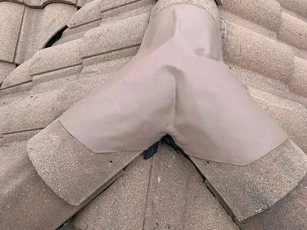West Lake Hills, Texas
Roof Repair & Roof Replacement in West Lake Hills, Texas
We Deliver Aesthetic, High-Quality Roofing Systems to Home-Owners in West Lake Hills, Texas
High-quality roofing materials for your home or building are essential for protecting it from the elements and adding to its aesthetic appeal. Various roofing materials are available, each with its advantages and disadvantages. This article will provide insights into some of the market’s most popular and high-quality roofing materials, such as asphalt shingles, metal roofing, clay, concrete tiles, and synthetic slates.
Asphalt shingles are a highly sought-after roofing material in the United States, and it’s easy to see why. They offer a winning combination of durability, affordability, and ease of installation, making them an ideal option for residential and commercial buildings. With various colors and styles available, finding the perfect look for your property is a breeze. Additionally, asphalt shingles require minimal upkeep and can provide up to 30 years of reliable service with proper care.
Metal roofing is a beloved and high-quality material that offers many benefits. It is sturdy, energy-efficient, and has a long lifespan. Metal roofing is resistant to fire, wind, and impact damage, making it an excellent option for areas prone to severe weather conditions. Additionally, it can reflect solar radiant heat, providing a cooling effect during the summer. While metal roofing is more expensive than asphalt shingles, its long-lasting durability and low maintenance costs make it a cost-effective choice.
Roofing materials like clay and concrete tiles are of excellent quality. These materials are made from natural substances, offering a distinct appearance that many homeowners desire. They are sturdy, long-lasting, and can endure up to 50 years. Furthermore, clay and concrete tiles have fire, wind, and impact resistance, requiring relatively low maintenance. However, they are heavy, and their installation can be challenging. Therefore, ensuring that your home or building structure can support its weight is crucial.
If you’re looking for a high-quality roofing material, synthetic slates are worth considering. These slates are made from plastic and rubber, carefully designed to resemble natural slate in both look and feel. One of the main benefits of artificial slates is that they are lightweight and easily installed, making them an ideal choice for buildings with limited structural support. Additionally, they are resistant to fire, wind, and impact damage and require minimal maintenance. And best of all, they are a more affordable alternative to natural slate, which can be pretty pricey.
It’s essential to remember the climate and weather conditions in your area and the style and aesthetic of your home or building when deciding on a roofing material. Each type of roofing material has pros and cons, so it’s crucial to conduct thorough research to find the ideal one for your needs.
Hiring a reliable roofing contractor to install any of the materials mentioned is crucial. Even if you use high-quality roofing materials, improper installation can result in leaks and other problems. Proper installation is essential to ensure that the material functions as intended and lasts for its expected lifespan.
To sum up, choosing high-quality roofing materials is vital to safeguard your home or building against weather conditions and enhance its appearance. There are various roofing options, each with pros and cons. Popular and top-notch options include asphalt shingles, metal roofing, clay, concrete tiles, and synthetic slates. It’s crucial to conduct thorough research, select the material that suits your requirements, and enlist the services of a trustworthy and skilled contractor to manage the installation process.

Harsh Weather & Hail Damage Roof Repair and Replacement in West Lake Hills, Texas.
Roofs can sustain significant damage from hail, which poses various issues for homeowners. The extent of damage can differ depending on factors such as the size, shape, and composition of the hailstones, as well as the condition and type of the roof. In this section, we will explore the most prevalent types of hail damage to roofs, the steps involved in evaluating and repairing the damage, and suggestions to prevent future harm caused by hail.
Hail damage often results in dents on metal roofing, whether a residential or commercial metal roofing system. The force of hailstones hitting the roof can cause minor, circular patterns on the metal surface. If left unaddressed, these dents can also appear on metal gutters and flashing, causing leaks and water damage.
A frequent type of hail damage is the breaking or cracking of asphalt shingles on residential and commercial roofs. Hailstones hitting the roof with sufficient force can cause this damage to the asphalt. If not repaired, this damage can lead to leaks and water damage.
Hail damage can cause granule loss on asphalt shingles, severe damage that occurs less frequently. Both residential and commercial roofs can be affected by this type of damage. The hailstones hit the roof with enough force to dislodge the protective granules on the surface of the shingles, leaving the underlying asphalt exposed to the elements. As a result, the shingles can age and deteriorate more quickly.
When assessing hail damage on a roof, a roofing contractor will usually visually inspect the roof and its components. The Roof Specialists will check for indications of wear, like dented metal, cracked or shattered shingles, or missing granules. They may also use specialized equipment, such as a moisture meter, to uncover hidden damage.
After assessing the extent of the damage, we will furnish an estimate for the repair costs. The expenses will vary based on the type and extent of damage and the roofing material used. In some instances, homeowners may be able to claim insurance coverage for the damages. We advise homeowners to contact their insurance provider immediately after the hailstorm, and an adjuster will investigate the roof to determine the extent of damage and the repair expenses.
Repairing hail damage on your roof will vary depending on the type of roofing material and the extent of the damage. If there are only minor dents on your metal roof, your Roof Specialists may use a rubber mallet to push the dent out gently. However, if the damage is more severe, they may need to remove and replace the affected panel. In the case of asphalt shingles, we generally replace any damaged or broken shingles. Additionally, granule loss can be repaired by replacing any damaged shingles. Your Roof Specialists are equipped to handle all these repairs and restore your roof to its previous condition.
Your Roof Specialists may repair the existing damage and take measures to prevent future hail damage. These measures may involve installing additional protection, such as hail guards or impact-resistant shingles. It’s important to note that some building codes mandate that contractors install such protection.
For homeowners, hail damage can pose a significant issue. However, enlisting the assistance of a reliable roofing contractor can lead to a speedy and efficient assessment and repair of any damage. It is important to note that even if the damage is not visible right away, it is crucial to have a professional inspect the roof to prevent any hidden damage that could result in leaks or water damage.
To sum up, hail damage to roofs can create many issues for homeowners. This type of damage is typically the result of hailstones hitting the roof with significant force.
STEP-BY-STEP TILE ROOF INSTALLATION
Replacing a tile roof is challenging and requires meticulous planning and execution. Here are the typical steps involved in a tile roof replacement:
1. Inspection and assessment
To begin assessing your roof, we will inspect its current condition. This includes searching for any signs of damage or wear, such as cracked or missing tiles, leaks, or indications of mold or rot. Our team of experts will also examine the decking, flashing, and underlayment to ensure they are in good condition.
2. Remove old tiles
After completing the assessment, we will remove the old tiles with caution to avoid causing any damage to the underlying decking or flashing. Our roofers will then dispose of the old tiles following local regulations.
3. Inspect the decking
Before installing the new tiles, the roofers inspect the decking to ensure it is in good condition. If any decking is damaged or rotten, we will replace those areas with new decking.
4. Install new underlayment
After ensuring the decking is in good condition, our team will install a fresh underlayment layer over the entire roof. This will serve as a protective barrier between the decking and the new tiles to be installed.
5. Install new flashing:
To ensure proper sealing and protection, we will install new flashing around all roof penetrations, including vents, chimneys, and skylights.
6. Install new tiles
Once the underlayment and flashing have been properly installed, our expert roofers will install the new tiles. The tiles will be placed in a specific pattern allowing interlocking following the manufacturer’s guidelines. Our skilled roofing team will seal the tiles around any flashing or penetrations to ensure proper protection.
7. Clean up
After the installation of the tiles, we will tidy up the job site by removing debris and ensuring that the area is clean and organized.
8. Final Inspection
After completing all the work, the roof specialists and you will inspect the roof to verify that it has been installed correctly with no issues. At this point, the roof specialist will explain the warranty.
Please keep in mind that this is a general outline of the process, and there may be differences depending on the roof’s current state, the type of tiles utilized, and local construction rules and regulations. Hiring a professional, licensed, and insured roofing contractor, like Austin Roof Specialists, is essential to ensure the job is done safely and up to industry standards. Tile roofing is a more specialized and labor-intensive process than other types of roofing, requiring specialized equipment, materials, and skilled labor.










